- Joined
- Oct 22, 2018
- Messages
- 136
- Points
- 253

The Setúbal hiate has its origin in the Dutch cabotage ships that in the 18th and 19th centuries went to the estuary of the Sado river to load salt. Setúbal salt, which had the property of bleaching fish in the salting process, was a highly appreciated product in northern European countries and played a fundamental role in the appearance of Setúbal hiate on the Portuguese coast. To appreciate the importance that this type of vessel had in Portuguese commercial navigation, it is enough to mention that in the year 1854 the hiates accounted for more than 50% of the total tonnage of ships with a tonnage of less than 100 m3 of the merchant Portuguese fleet, reaching that percentage of 95% in the port of Setúbal.
The Setúbal hiate was not the only hiate existing on the Portuguese coast, since that denomination designated a type of boat with two masts of equal height, in which both were rigged with a gaff sail and with one or two staysails on the forward mast. A typical feature of the Setúbal hiate was that while the foremast was vertical, the main one had a marked inclination towards the stern. The fixed rigging was made up of two shrouds overboard for each mast and one or two stay in the front, while the tops of the masts are linked by a rope called a vergueiro. The gaff sails had two or three rows of reefs and were attached to the masts with chestnut rings while the staysails were done by means of metal rings. A peculiarity of this boat was the way in which the sheet maneuver of the main gaff sail was fixed, which ran on a guide (berimbau) in the shape of a large ring fixed to the top of the stern.
The hull was characterized by a typical bow with a dock and a short almost horizontal bowsprit, a rounded stern with the rudder on the outside and a continuous deck with two large cargo hatches behind each of the masts, and two small hatches, one forward. and another at the stern, for crew accommodation. The most notable feature of the hull was the rounded bow in contrast to the more tapered stern, evoking an almost unchanged 18th century design.
The dimensions that the hiates showed were a length of 15 to 19 m., a beam of 4.3 to 5.2 m. and a depth of 1.5 to 1.7 m.
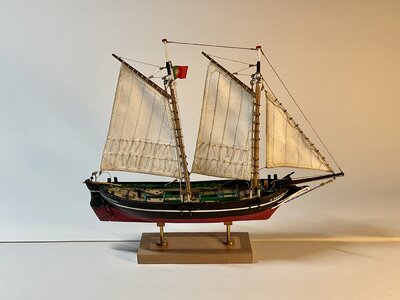
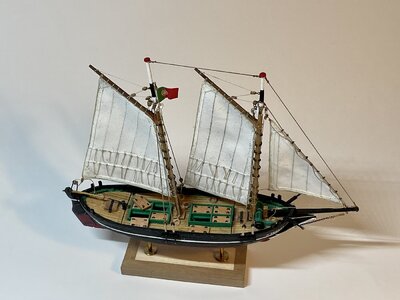
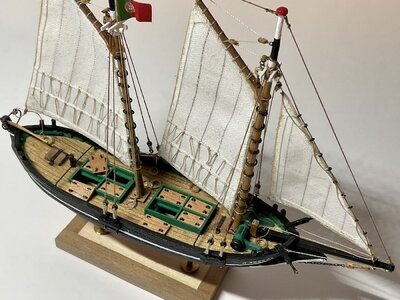
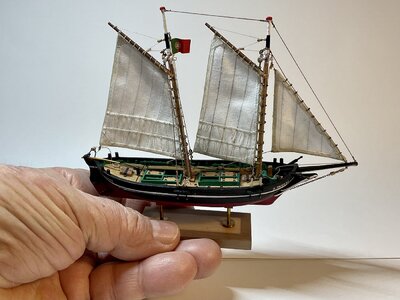
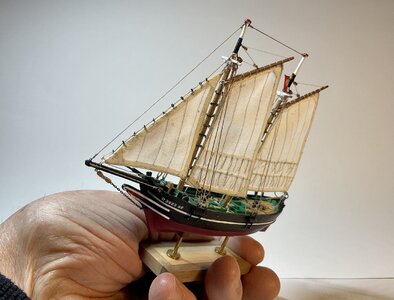
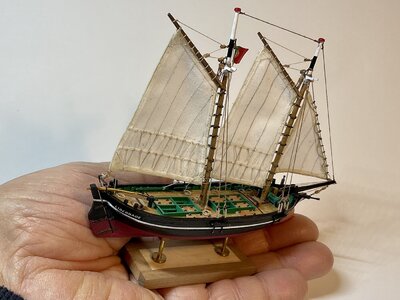
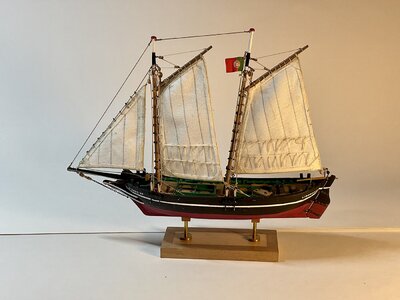
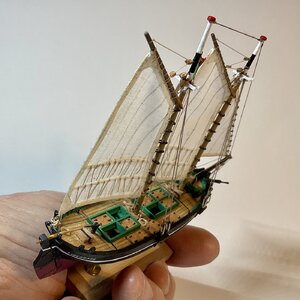
The Setúbal hiate was not the only hiate existing on the Portuguese coast, since that denomination designated a type of boat with two masts of equal height, in which both were rigged with a gaff sail and with one or two staysails on the forward mast. A typical feature of the Setúbal hiate was that while the foremast was vertical, the main one had a marked inclination towards the stern. The fixed rigging was made up of two shrouds overboard for each mast and one or two stay in the front, while the tops of the masts are linked by a rope called a vergueiro. The gaff sails had two or three rows of reefs and were attached to the masts with chestnut rings while the staysails were done by means of metal rings. A peculiarity of this boat was the way in which the sheet maneuver of the main gaff sail was fixed, which ran on a guide (berimbau) in the shape of a large ring fixed to the top of the stern.
The hull was characterized by a typical bow with a dock and a short almost horizontal bowsprit, a rounded stern with the rudder on the outside and a continuous deck with two large cargo hatches behind each of the masts, and two small hatches, one forward. and another at the stern, for crew accommodation. The most notable feature of the hull was the rounded bow in contrast to the more tapered stern, evoking an almost unchanged 18th century design.
The dimensions that the hiates showed were a length of 15 to 19 m., a beam of 4.3 to 5.2 m. and a depth of 1.5 to 1.7 m.













